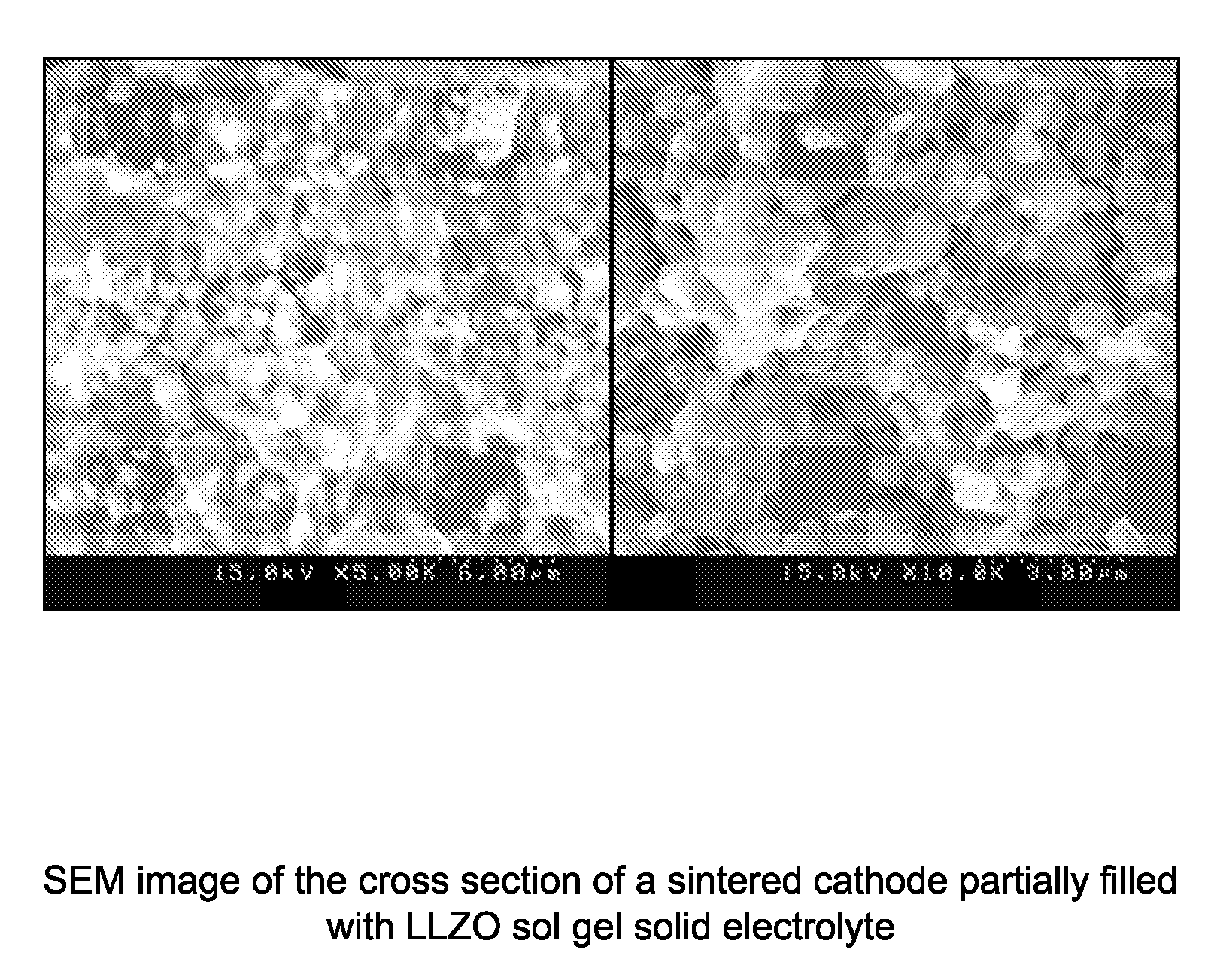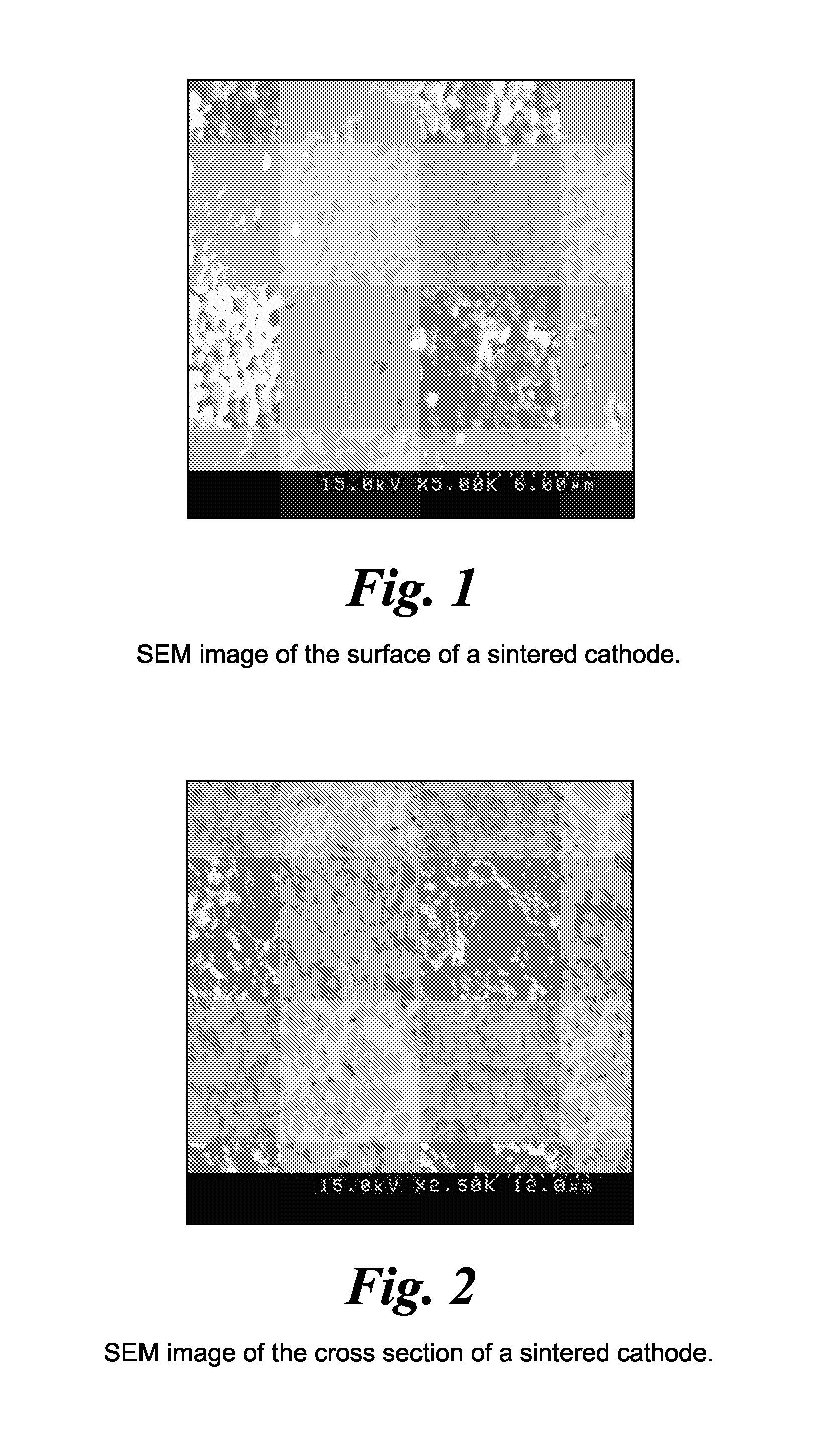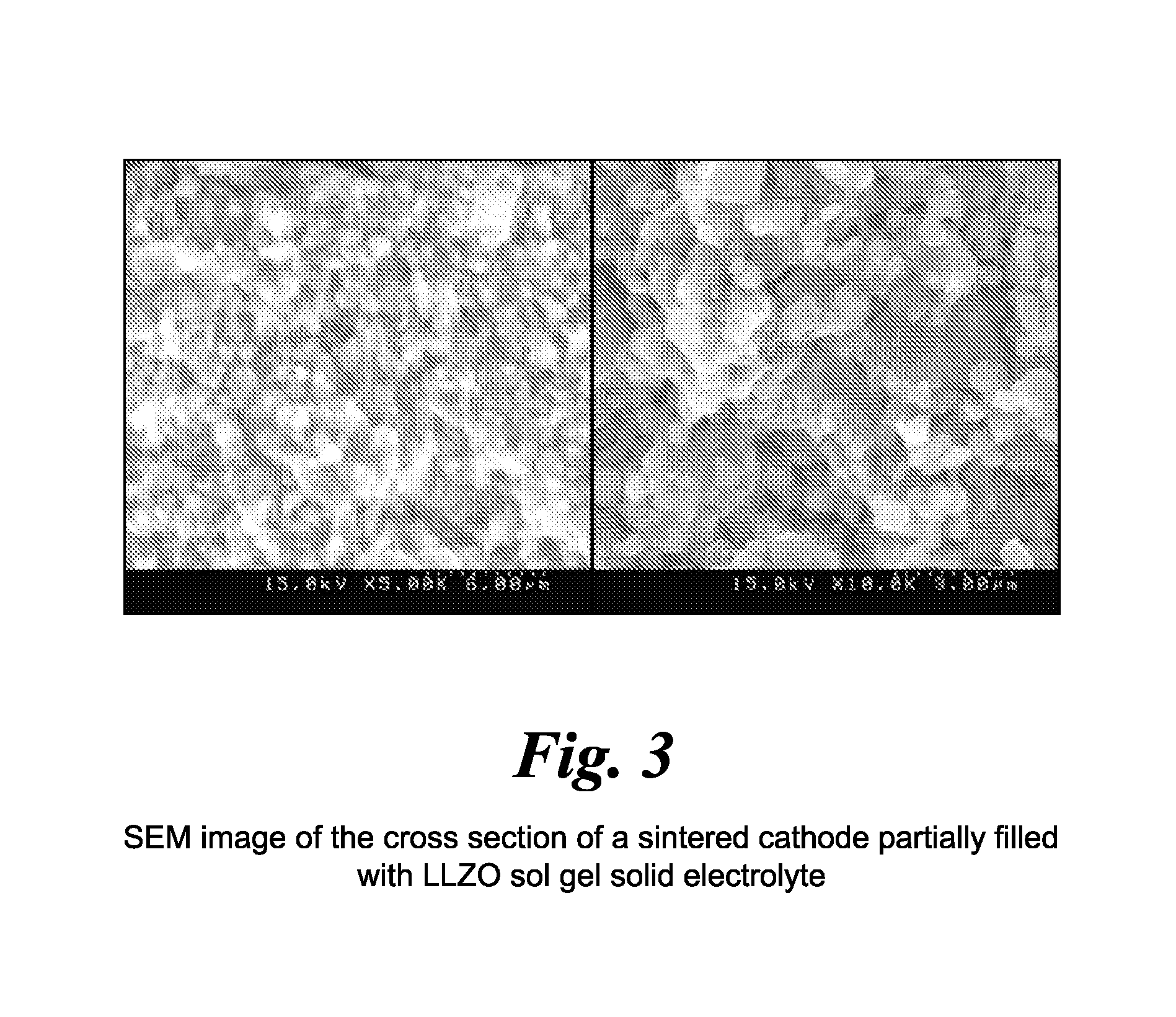Impregnated sintered solid state composite electrode, solid state battery, and methods of preparation
a technology of impregnated sintered and composite electrodes, which is applied in the direction of non-aqueous electrolyte cells, cell components, electrochemical generators, etc., can solve the problems of limited distance between lithium ions, limited cathode access, and battery use restrictions
- Summary
- Abstract
- Description
- Claims
- Application Information
AI Technical Summary
Benefits of technology
Problems solved by technology
Method used
Image
Examples
example 1
Preparation of Cathode Pellet
[0069]A slurry was prepared from 150 g of cathode powder (NCM), obtained from Pred Materials International (New York, N.Y.), about 30 g of xylene, about 30 g of ethanol, about 7 g of PVB, and about 3.5 g of butyl benzyl phthalate. The combination of powder, solvents, binder(s), and plasticizer(s) was mixed thoroughly by ball milling to form a homogeneous slurry, then cast into a sheet by tape casting on a standard flat casting table.
[0070]The resulting sheet was dried for about two hours at room temperature, folded, and calendered (compacted) between rollers using a roller-compactor apparatus to the desired thickness of about 6 mil (150 microns). The resulting uniform sheet was then punched into pellets of about ¾″ diameter using a round puncher and heated at about 400° C. in air for about two hours in order to remove the organic components from the pellets. The pellets were then sintered at 900° C. in oxygen for about one hour to produce a self supporti...
example 2
Comparison of Precursor Solution Concentration
[0074]Measurements were performed by spin coating differently condensed precursor solutions onto glass substrates with conductive aluminum strips. After curing of the spin-coated layers by the regular LLZO curing process, a second layer of gold contacts was sputtered on top.
[0075]The impedance of the resulting amorphous LLZO films was measured using an electrochemical impedance spectroscopy (EIS) instrument. The EIS data for the amorphous LLZO films prepared from 25%, 50% and 75% condensed precursor solutions (75% represents the highest concentration) are shown in FIGS. 4, 5 and 6, respectively. The resistance used to calculate the conductivity of the LLZO films is taken at the high frequency real axis intercept of the Nyquist plot, which is more clearly shown in the inset of the graphs. Using this resistance and the thickness and the geometry of the sample, the conductivity may be estimated. FIG. 7 is a graph of the conductivity of the ...
PUM
| Property | Measurement | Unit |
|---|---|---|
| Temperature | aaaaa | aaaaa |
| Temperature | aaaaa | aaaaa |
| Temperature | aaaaa | aaaaa |
Abstract
Description
Claims
Application Information
 Login to View More
Login to View More - R&D
- Intellectual Property
- Life Sciences
- Materials
- Tech Scout
- Unparalleled Data Quality
- Higher Quality Content
- 60% Fewer Hallucinations
Browse by: Latest US Patents, China's latest patents, Technical Efficacy Thesaurus, Application Domain, Technology Topic, Popular Technical Reports.
© 2025 PatSnap. All rights reserved.Legal|Privacy policy|Modern Slavery Act Transparency Statement|Sitemap|About US| Contact US: help@patsnap.com



